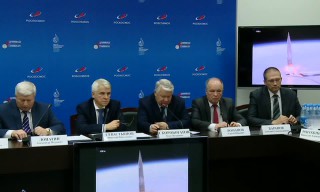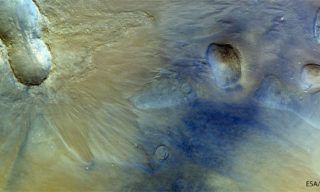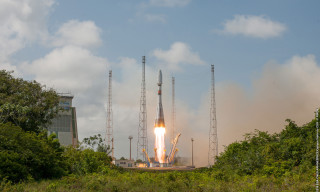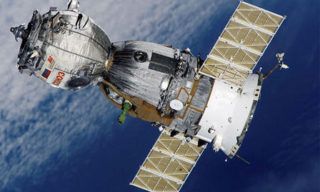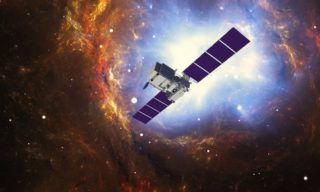According to RIA Novosti, in response to a request posted by bloggers in social networks, Russian space officials have agreed to adjust the work of cameras on a weather satellite to take detailed pictures of the lunar shadow as it moves around the Earth during the May 10 solar eclipse.
Russia’s Electro-L geostationary satellite will capture two images of the Eastern hemisphere in a 30-minute interval early on Friday. The regular imaging frequency of the satellite’s cameras is one image every 30 minutes.
“We will be able to provide a detailed animated picture of the lunar shadow’s movement,” said Sergei Uspensky, from the “Planeta” State Research Center of Space Meteorology.
The scientist said the authors of the request had been notified about the decision, and the imagery would be made public on May 11.
This week’s solar eclipse will be “ring-shaped” as the moon will only partially cover the sun. The event is also known as an annular eclipse.
During annular solar eclipses, the moon casts a shadow on the face of the Earth when it passes between the planet and the sun.
This time, the Russian satellite will capture the movement of the lunar shadow in the very beginning of its path around the Earth as it passes through parts of Papua New Guinea, the Solomon Islands, and Western Australia, the Northern Territory and Queensland in Australia.
The second solar eclipse this year will occur on November 3. It will be a rare hybrid eclipse when an annular eclipse transitions into a total eclipse. The event will be visible in the northern Atlantic Ocean and equatorial Africa.
The Elecrto-L satellite is able to image the Eastern hemisphere in visible and infrared frequencies, additionally providing data on climate change, as well as sea and ocean monitoring.
It was launched in January 2011 as part of Russia’s effort to restore its weather satellite network.







